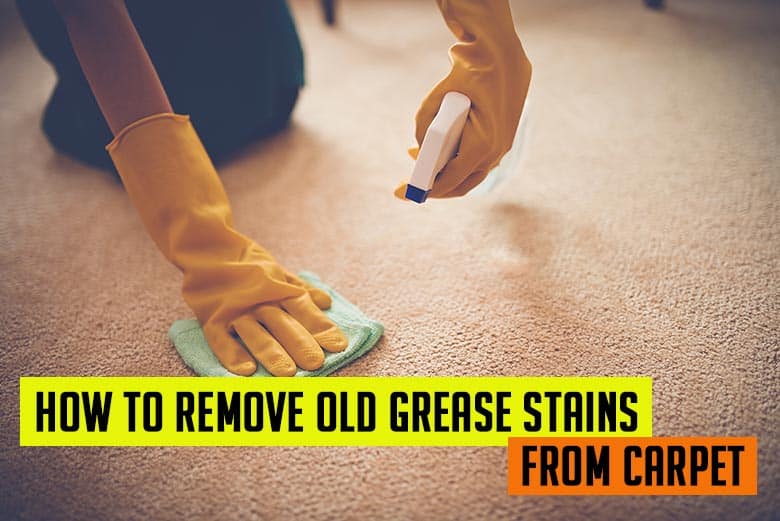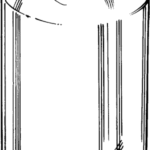Expert Guide: Removing Automotive Grease from Carpet - Step-by-Step Solutions & Real-World Strategies

Introduction: Understanding Automotive Grease Stains
Automotive grease stains are among the most challenging to remove from carpet due to their oil-based nature. Such stains penetrate deeply, leaving behind a dark, slick residue that resists standard cleaning approaches. Whether you’ve tracked grease in from your garage or encountered a spill during DIY auto repairs, prompt action and proper technique are essential to restore your carpet’s appearance. This guide provides a comprehensive, step-by-step approach to removing automotive grease from carpet, addresses common challenges, and recommends alternative solutions for persistent stains.
Step 1: Initial Response-Blotting and Absorption
Immediate action is crucial when dealing with fresh automotive grease. Begin by gently blotting the stain with a clean, dry cloth or paper towel. Avoid rubbing the area, as this can push grease further into carpet fibers, making removal more difficult [1] . Continue blotting until no more grease transfers to the cloth. For dried or older stains, use a dull edge-such as a spoon-to scrape away any residue before proceeding.
Step 2: Applying Absorbent Powders
Baking soda is highly effective for absorbing oils from carpet. Generously sprinkle baking soda over the grease stain, ensuring it covers the area in a layer at least 2mm thick [2] . Use a small cleaning brush or toothbrush to gently work the powder into the fibers. Let the baking soda sit for at least one hour (overnight for tough stains), then vacuum thoroughly. If baking soda is unavailable, corn starch, talcum powder, or polenta can be substituted, as these inert powders also absorb oils without damaging carpet [3] .
Step 3: Preparing and Applying Cleaning Solutions
After the initial absorption, a cleaning solution is needed to break down the remaining grease:
- Vinegar Solution: Mix 1/4 cup white vinegar with 1 teaspoon baking soda and 1 teaspoon salt. Dip a clean cloth into the solution and blot the stain, allowing the mixture to penetrate and lift the grease. Rinse with cold water and blot dry. Repeat as necessary for persistent stains [1] .
- Liquid Soap Solution: Combine 1 cup warm water with 1 tablespoon liquid dish soap. Apply to the stain with a spray bottle, lightly scrub with a brush, and blot away excess moisture. This method is suitable for fresh stains and can be repeated if needed [2] .
- Ammonia-Based Solution: For stubborn, set-in stains, mix 1 teaspoon ammonia, 3 teaspoons liquid soap, and 3 cups warm water. Spray the solution onto the stain, allow it to sit for 5-10 minutes, then blot and rinse. Ammonia is powerful for cutting through grease but should be used with caution-ensure good ventilation and avoid mixing with other chemicals [2] .
- Commercial Stain Removers: Some combination solvents containing glycerin, soap, and water-like Shout, Spray ‘n Wash, or Magic-are formulated for automotive grease and oil stains. Apply the product to a cleaning cloth, press over the stain without rubbing, and rotate to clean areas of the cloth as soil transfers. Agitate with a toothbrush if needed. These products are widely available at hardware and grocery stores [5] .
Step 4: Rinsing and Drying
After treating the stain, rinse the affected area with cold water to remove any chemical residue. Blot with a dry towel to extract moisture. For best results, allow the carpet to dry completely by opening windows or using a fan. Once dry, vacuum the area to restore the carpet’s texture and nap [3] .
Step 5: Repeat and Troubleshoot
Some automotive grease stains may require multiple treatments. If traces of grease remain, repeat the cleaning solution application and absorption steps. Persistent stains may benefit from alternating solutions-such as switching from vinegar to ammonia-based formulas or trying a commercial product after home remedies.
Alternative Approaches and Professional Help
In cases where home methods do not yield satisfactory results, or if the carpet is delicate or high-value, professional cleaning may be necessary. Carpet cleaning services use specialized solvents and equipment to extract oil-based stains effectively. Before booking a service, research reputable providers in your area or consult your carpet manufacturer for recommended cleaning professionals.

Source: crowdpullersevents.com
For DIY enthusiasts seeking more advanced options, denatured alcohol and degreasing dish detergents can be used cautiously. Always test new cleaning agents on a hidden section of carpet to check for colorfastness prior to full application [4] .
Potential Challenges and Solutions
Challenge: Grease spreads during cleaning. Solution: Always blot toward the center of the stain and avoid aggressive rubbing. Use clean cloths and rotate frequently to prevent soil redistribution.
Challenge: Odor or residue after cleaning. Solution: Rinse thoroughly after treating the stain and allow the area to dry completely. A final vacuum helps restore freshness and texture.
Challenge: Stain remains after several attempts. Solution: Alternate between different cleaning solutions and increase soak time. For older stains, professional cleaning may be necessary.
Safety and Carpet Care Tips
- Test all cleaning solutions on an inconspicuous area of carpet before applying to the stain.
- Wear gloves when handling ammonia or commercial solvents.
- Ensure adequate ventilation when using strong chemicals.
- Do not over-wet the carpet, as excess moisture can lead to mold or mildew.
- Always consult your carpet’s care instructions and manufacturer guidelines for recommended products.
Accessing Professional Services and Products
If you require specialized products, visit your local hardware store or major retailers to find commercial stain removers such as Shout, Spray ‘n Wash, or Magic. For professional carpet cleaning, search online for certified providers in your region or consult with your carpet retailer for recommendations. Many services offer free consultations and will advise on the best approach for your specific carpet type and stain severity.
Key Takeaways
Removing automotive grease from carpet is possible with the right approach, patience, and products. Begin with absorption methods, progress to targeted cleaning solutions, and repeat as needed for persistent stains. Always prioritize safety and carpet care, and seek professional help if DIY efforts are unsuccessful. By following these expert steps-and using proven household ingredients-you can restore your carpet and maintain a clean, healthy home environment.

Source: automotoride.com
References
- [1] Zerorez (2020). How to Remove Motor Grease Stains and Marks from Carpet.
- [2] Truck Mount Forums Store (2022). How to Get Grease out of a Carpet.
- [3] Carpet Bright UK (2024). How to get oil out of my Carpet?
- [4] YouTube: ProCleaner.biz (2012). How to Remove Tar, Grease and Oil Based Spots from Carpet.
- [5] University of Georgia Extension (2024). Remove Stains From Grease (Automotive, Cooling, Vaseline).






